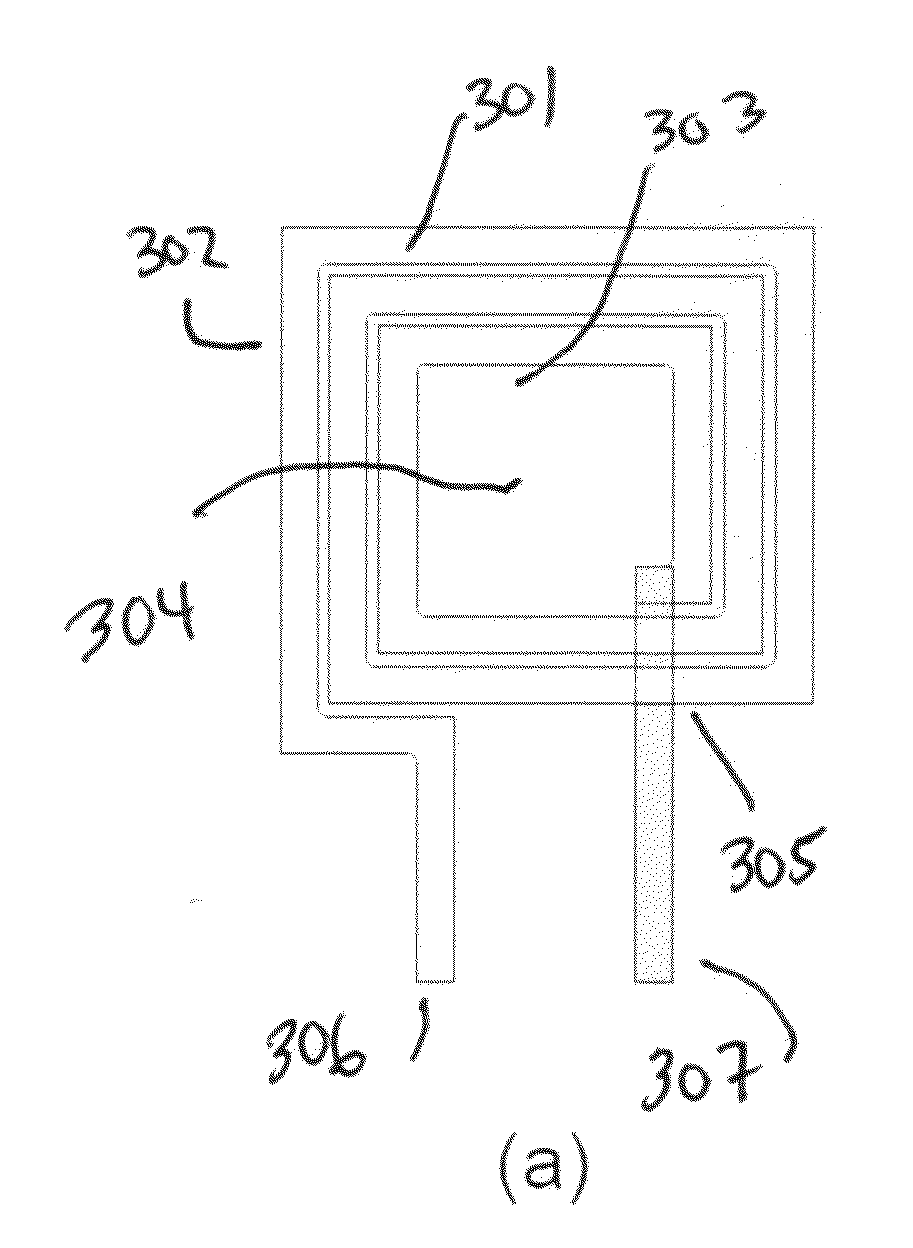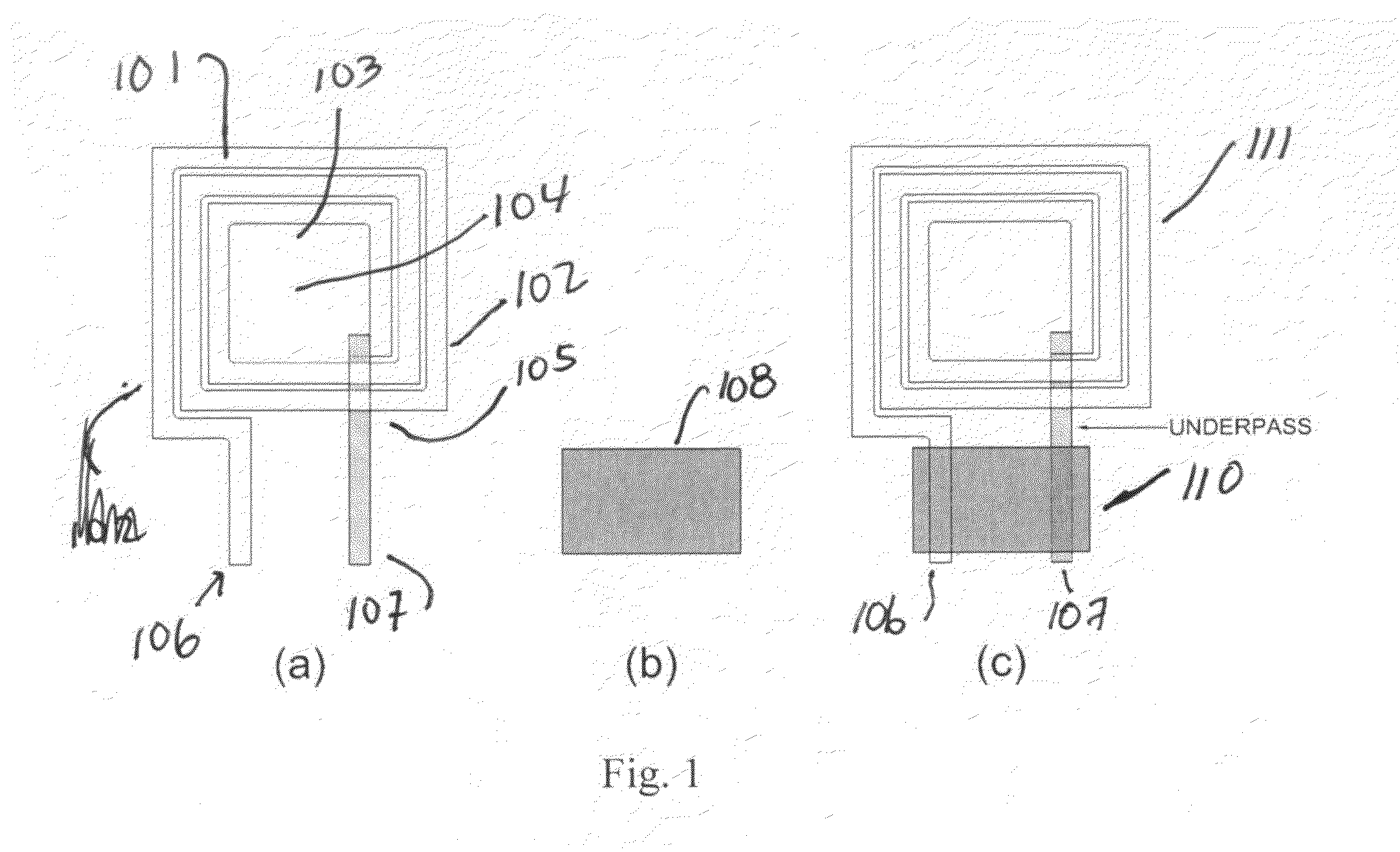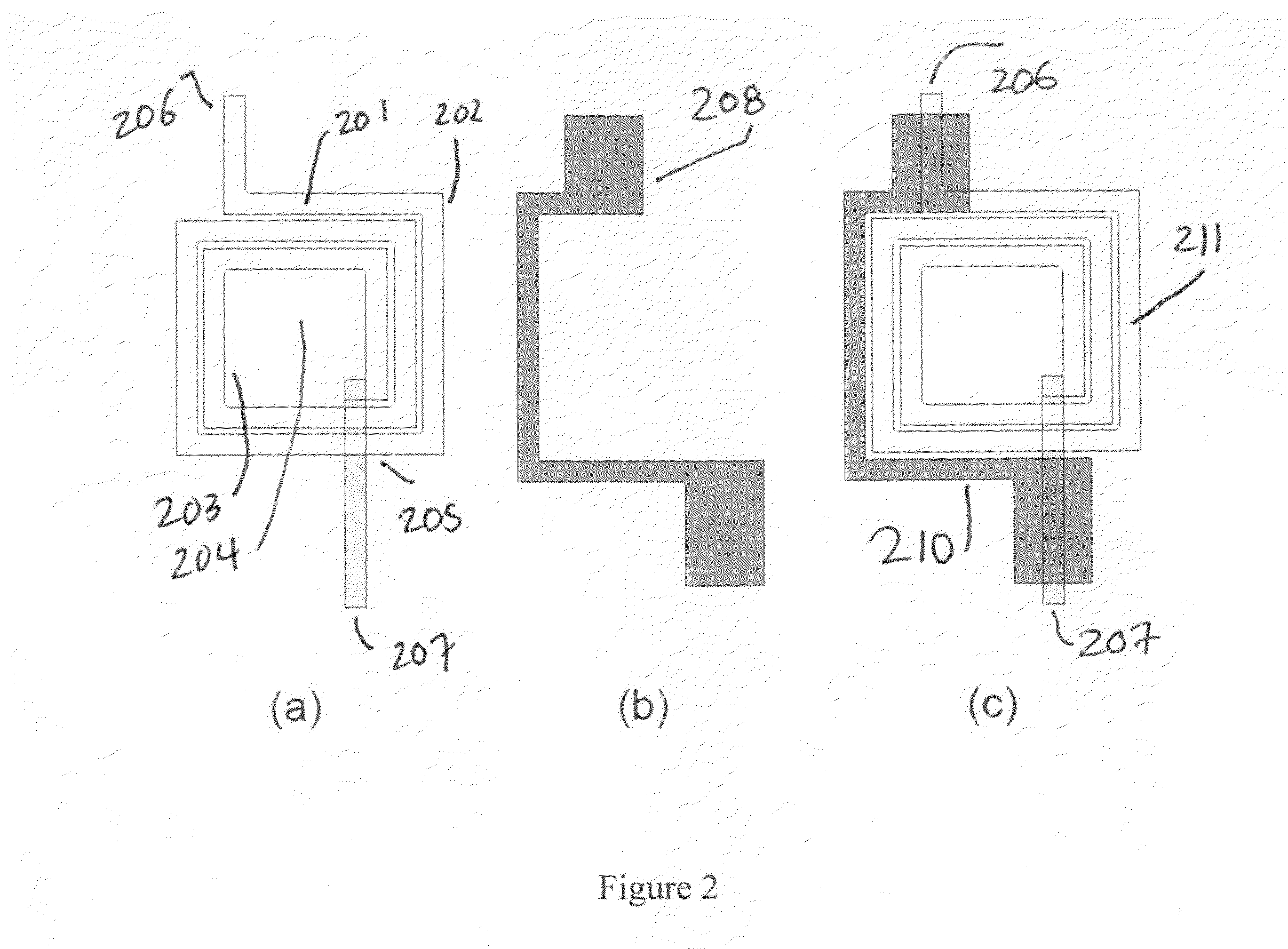Compact-area capacitive plates for use with spiral inductors having more than one turn
a capacitive plate and capacitive plate technology, applied in the field of electric circuits, can solve the problems of energy loss and complicate to some degree the layout of spiral inductor circuits, and achieve the effect of lessening the interaction with surrounding lossy materials
- Summary
- Abstract
- Description
- Claims
- Application Information
AI Technical Summary
Benefits of technology
Problems solved by technology
Method used
Image
Examples
Embodiment Construction
[0050]Presented herein is a method and apparatus for constructing a compact inductive-capacitive LC circuit. This method helps a designer save area when laying out a circuit, without adversely affecting the Q-factor. In some designs, a higher-than-expected Q-factor is realized, compared to Q-factors obtained with conventionally laid-out intermetal plate capacitance or electrically attached discrete capacitive components.
Terminology
[0051]The following terminology used herein is related to the process of producing compact inductive-capacitive LC circuits. Inductive-capacitive LC circuits are also referred to by other terms, including LC circuits, (LC)-tank circuits, RLC circuits, or inductance-capacitance circuits.
[0052]In this specification, the magnetic field is represented by the magnetic flux density, as the capital letter “B.” The electric field is represented by a capital “E.”
[0053]In this specification, the term “primary spiral inductor” refers to the first inductor, i.e., the ...
PUM
| Property | Measurement | Unit |
|---|---|---|
| sizes | aaaaa | aaaaa |
| thick | aaaaa | aaaaa |
| interlayer distances | aaaaa | aaaaa |
Abstract
Description
Claims
Application Information
 Login to View More
Login to View More - R&D
- Intellectual Property
- Life Sciences
- Materials
- Tech Scout
- Unparalleled Data Quality
- Higher Quality Content
- 60% Fewer Hallucinations
Browse by: Latest US Patents, China's latest patents, Technical Efficacy Thesaurus, Application Domain, Technology Topic, Popular Technical Reports.
© 2025 PatSnap. All rights reserved.Legal|Privacy policy|Modern Slavery Act Transparency Statement|Sitemap|About US| Contact US: help@patsnap.com



